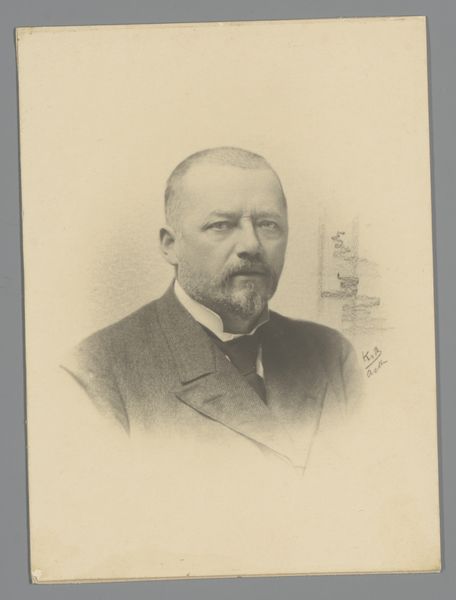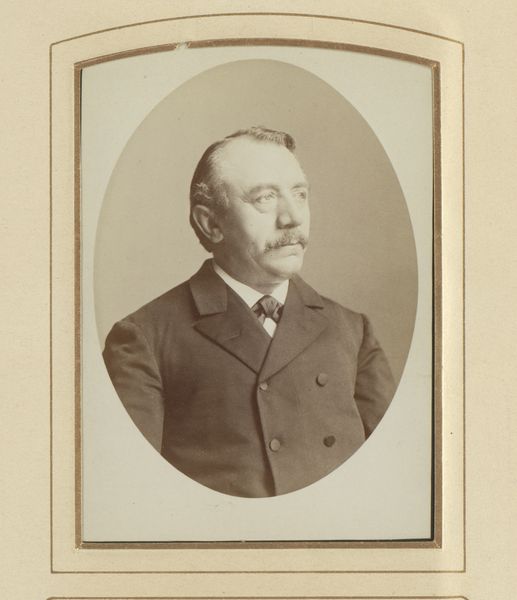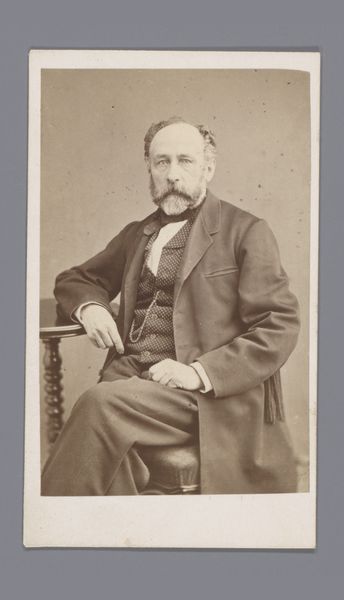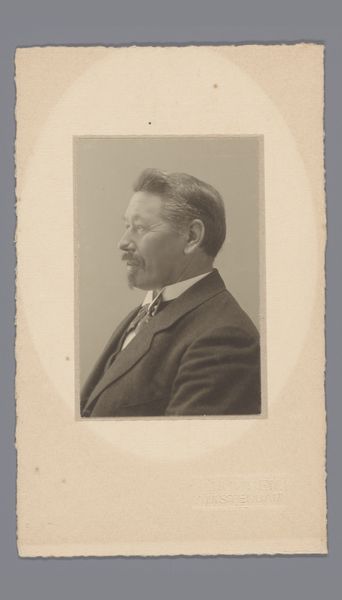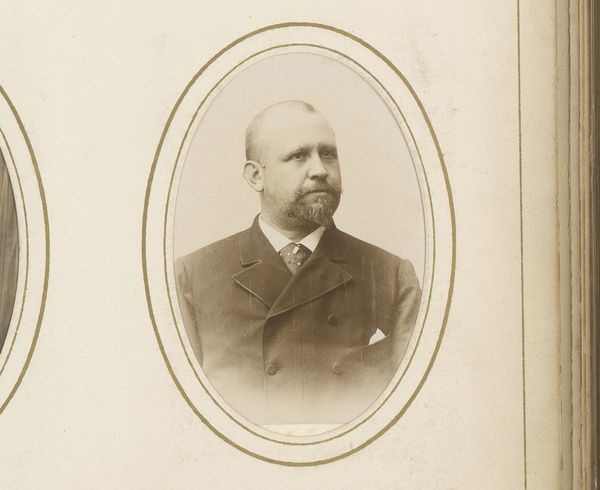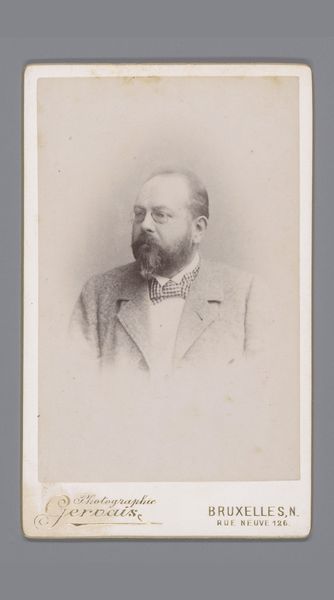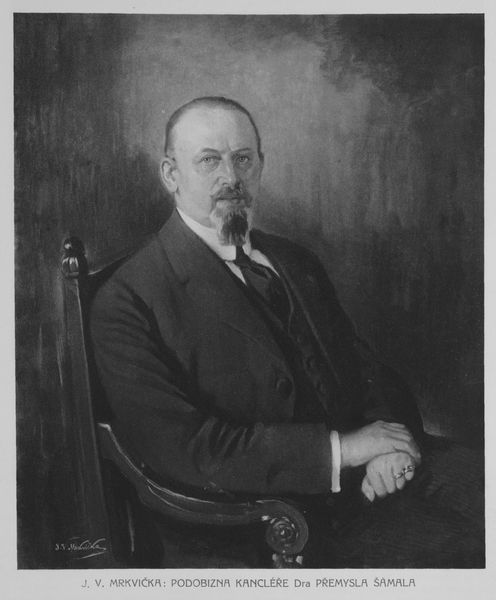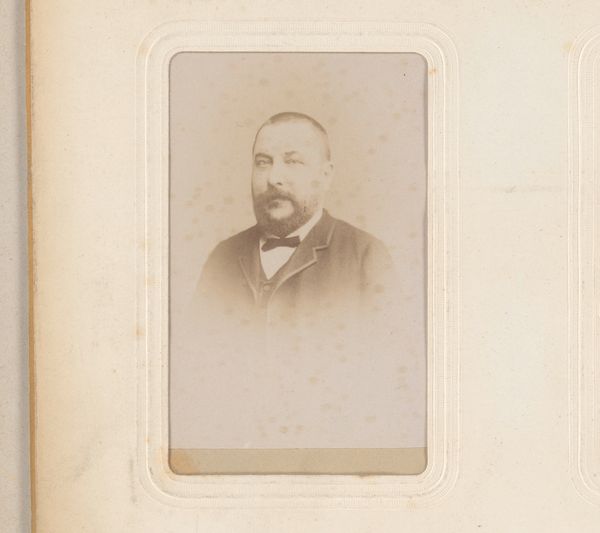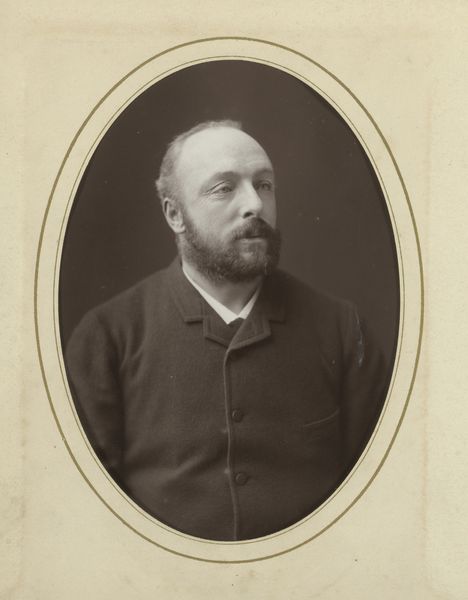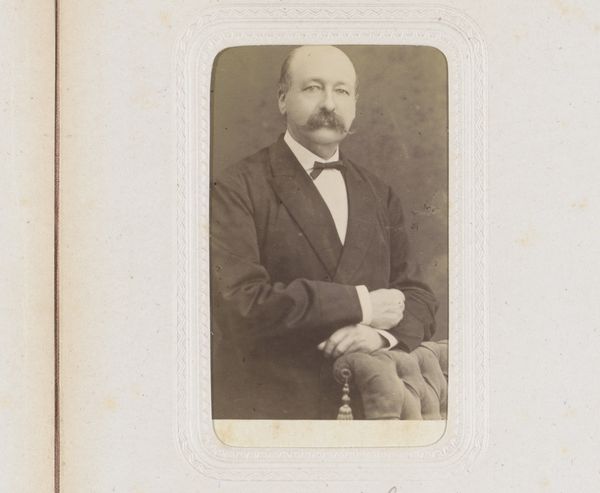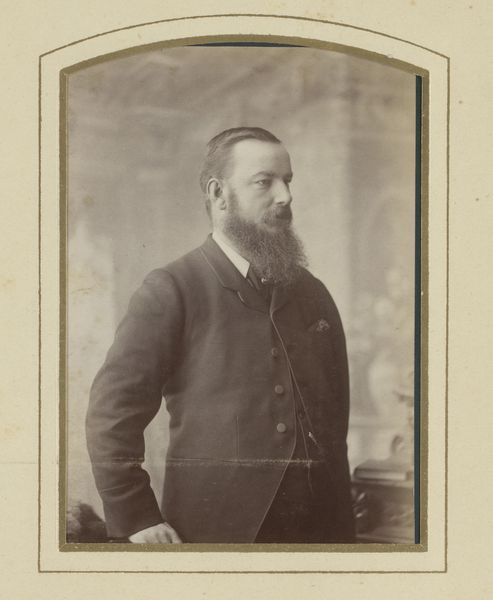
print, photography
#
portrait
# print
#
photography
#
realism
Dimensions: height 200 mm, width 148 mm
Copyright: Rijks Museum: Open Domain
Curator: Here we have a photograph from around 1915, “Portret van Lucas Jonker,” made by the studio of Koene & Büttinghausen. It's a dignified portrait. What are your first thoughts? Editor: I find the sepia tones very compelling—it lends an air of historical solemnity, but there's something almost melancholic about it too, perhaps the slightly weary expression. Curator: Yes, that tonal quality evokes the passage of time. Sepia in photographs from that era became inextricably linked with remembrance and preserving memory. The subject, Lucas Jonker, is presented formally, embodying the stoic middle class. Notice how the tie, collar and lapel almost frame his face as a focal point. Editor: Absolutely. His gaze is quite direct, which feels purposeful. I'm curious about his social standing and how the composition reinforces the sitter's status—how might the portrait have shaped the perception of someone of his time? The crisp definition is striking, almost asserting a certain masculine strength or authority through hyperrealism. Curator: The realism aligns with a desire to capture not just appearance, but also the essence of the sitter. Every detail, from his neat beard to the tailoring of his jacket, reflects the values of that era: order, control, respectability. But the print and photographic technologies here may offer something additional to the sitter too, adding a weight that feels specific to this media. Editor: True, photography does lend itself to a heightened sense of 'truth' perhaps because of its association with accurate capture—a technology used as an art to express the person within, beyond his garments. How far did Koene and Buttinghausen’s process make statements about gender expectations or societal standards when portraying their male subjects? Curator: This form of representation sought a certain ideal, it would seem—not merely an image of someone in particular, but rather his qualities universalized through style: what we might expect from a businessman or statesman. Consider that we see this, still, and that informs our reading, unconsciously perhaps. Editor: This portrait provides an engaging reflection of self-perception through the prism of both photography’s technology and the norms during those years. Thank you for highlighting those insightful points! Curator: And thank you; thinking about this has shed fresh light on what’s happening below the surface of this formally staged moment in time.
Comments
No comments
Be the first to comment and join the conversation on the ultimate creative platform.
